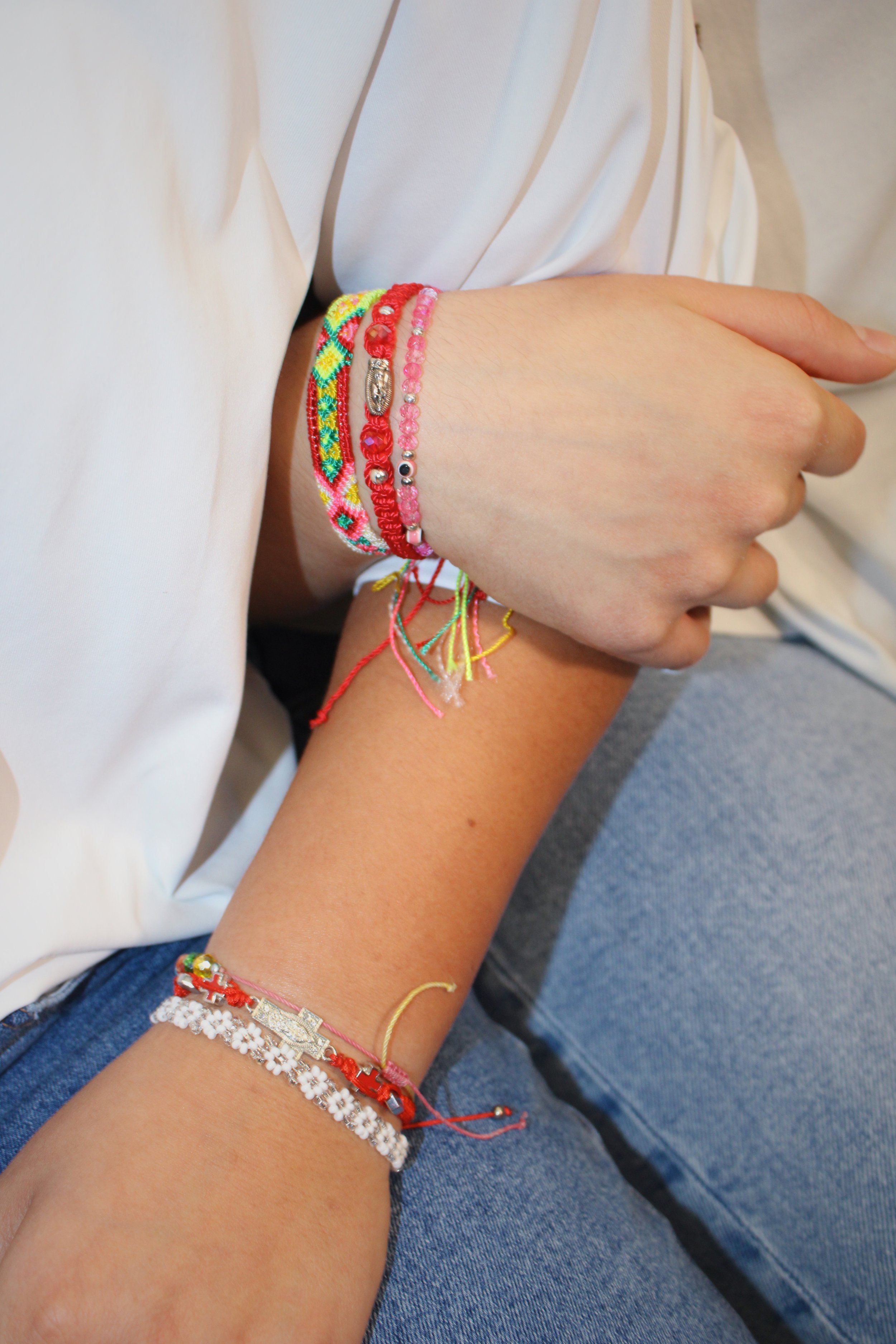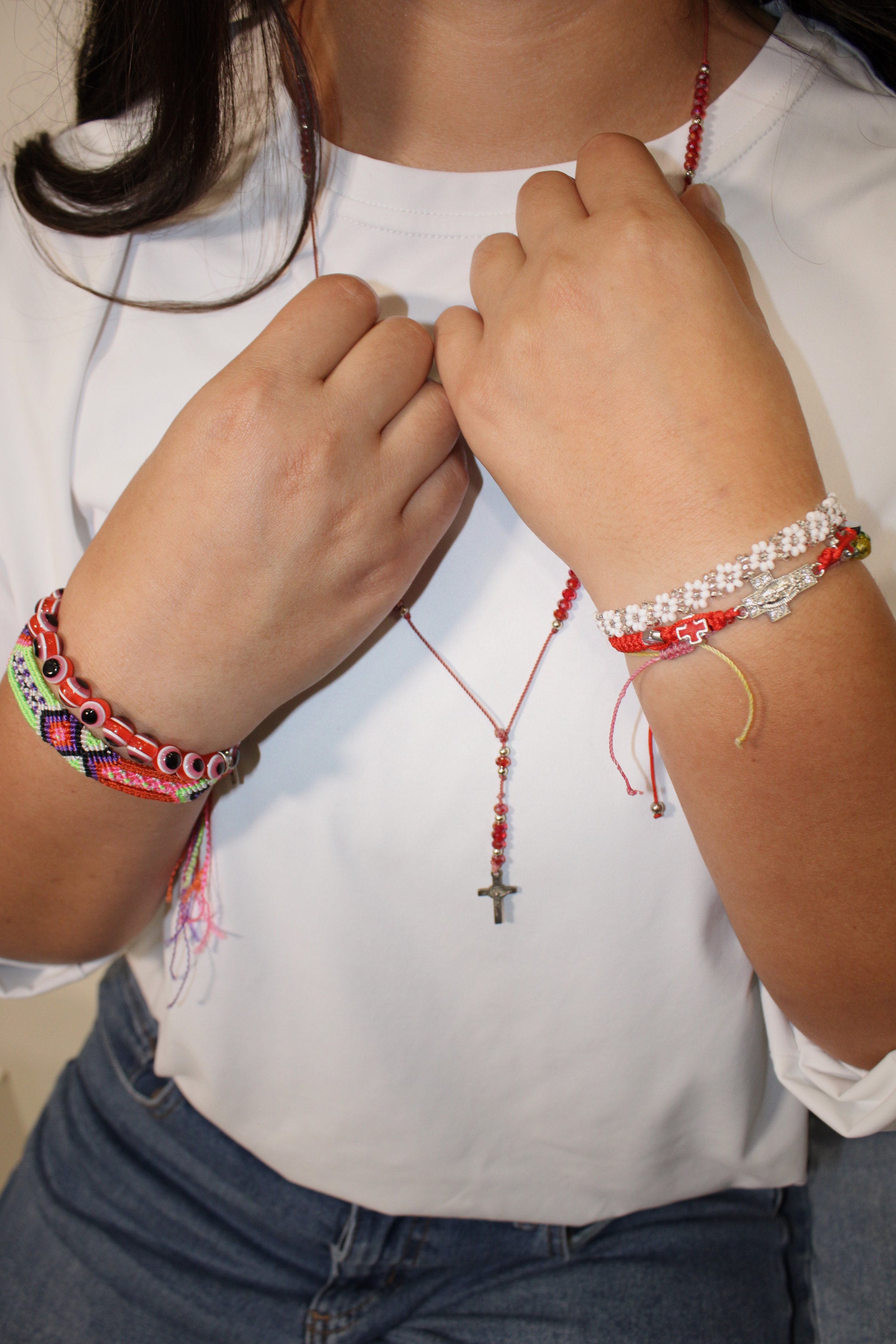Crafted Culture: Latinx Jewelry
Written and Photographed By Janette Beckner
Modeled By Bianca Salomon & Júlia Rosseto
Jewelry pieces such as evil eye pendants, street-weaved and beaded bracelets, and even rosaries are accessories seen today, but where did these jewelry pieces initially come from? Why are they predominantly attached to the Latinx community? These jewelry pieces are more predominant in the Latinx community because they are a part of the Latinx culture and because, in recent years, they have brought the most awareness to these pieces of jewelry.
The evil eye has been around for centuries. It is said to have originated in Greece in the 6th century B.C.E. It’s thought that the evil eye came to Latin America through Spanish colonists during the colonial period and European colonists and West Asian immigrants. Some people in the Latinx community have said they still wear their evil eye bracelets because they represent a part of their culture and are a symbol of protection. Evil eye jewels can be strung on necklaces and bracelets and made into earrings and rings. They can also hang from a main door or entrance to someone's home to provide protection.
Many countries and cultures believe in the use of the evil eye. These cultures believe it to be used as protection against jealousy and envy, reminding people to be cautious of what they say and do. These cultures believe the evil eye to be bad luck that can cause harm to people, animals, cultures, and even crops. Some of the Latinx community feel this way as well. The flip side of this belief is that it can be used as protection against envy and resentment. This reminds people to be careful about what they say and do. Three examples of countries and cultures that use the evil eye are Latin America, Greece, and Turkey. In Latin America, the evil eye is also referred to as “Mal de Ojo,” in Greece, it is called “Mati,” and in Turkey, it is known as “Nazar Boncuk.”
The popular belief that the evil eye can protect its wearer closely relates to why some members of the Latinx community still wear and use rosaries. This is because rosaries are also a symbol of protection and devotion. They can be passed down through family members or received at baptisms and communion. Rosaries originated for prayer, with each bead and group of beads referring to a different prayer section. Catholics use rosaries to pray on the life of Jesus and Mary. Over time, they have become a statement piece for Latinx cultures and belief systems. People continue to wear evil eye jewelry and rosaries because these items give us a sense of home, protection, and comfort.
Lastly, woven bracelets and beaded bracelets, sold at markets, stores, or street markets, are also widely worn throughout the Latinx community. Members of the Latinx community love to wear these bracelets because they give them a sense of home and emphasize their culture. When we wear these bracelets, we bring attention to the people who paved the way before us so generations after them could have what we have now. We support them and their work by wearing the bracelets they make for a living. It’s lovely how jewelry can make us feel so safe and beautiful and give an inside look into who we are as people.
What we wear on the outside can determine how we might feel on the inside. I know I love to wear my evil eye bracelets, rosaries, and beaded bracelets. Growing up as a Mexican-American in a predominantly white area, these jewelry pieces gave me a sense of home and protection. I was always told that my evil eye bracelets and rosaries would protect me, and I still believe that. With the beaded bracelets, I grew up loving and buying them in Mexico and bringing them home for friends and family. It was a way for me to share my culture with everyone else because I was proud of where I came from; I still am and still do this.
When I was younger, I struggled with feeling like I was too American for Mexico and too Mexican for America. These jewelry pieces made me feel better about my feelings, and they still do. As a result of my personal experiences, I'm excited to see how these jewelry pieces continue to evolve!




